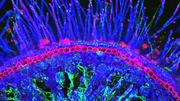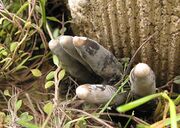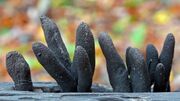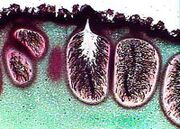Uploads by Cjmarkha
Jump to navigation
Jump to search
This special page shows all uploaded files.
| Date | Name | Thumbnail | Size | Description | Versions |
|---|---|---|---|---|---|
| 15:01, 4 May 2022 | Phenazine Colors.jpg (file) |  |
27 KB | a) Streak plate of P. auerofaciens which produces the bright orange phenazine 2-OHPCA. b) Various phenazines in test tubes displaying a spectrum of bright colors. Source: (Price-Whelan et al., 2006) | 1 |
| 15:16, 4 May 2022 | PCA.png (file) |  |
25 KB | The chemical structure of phenazine-1-carboxylic acid (PCA). Notice the three carbon rings with the center ring containing two nitrogen atoms which is common to all phenazines. Source: WITEGA Source: WITEGA Laboratorien Berlin-Adlershof GmbH. (n.d.) Phenazine-1-carboxylic acid. https://auftragssynthese.com/en/produkt/phenazine-1-carboxylic-acid-tubermycin-b/ | 1 |
| 15:30, 4 May 2022 | Phenazine Producer Phylogeny.jpg (file) |  |
293 KB | The phylogenetic tree of the phenazine-producing bacteria with specific clades annotated around the tree. '''Source:''' (Dar et al., 2020) | 1 |
| 15:51, 4 May 2022 | D. Japonica in maize roots.png (file) |  |
1.2 MB | A maximal-projection cross-sectional image of a maize seedling root which shows that it has been colonized by the phenazine-producing bacteria ''D. japonica'' (in green). | 1 |
| 01:53, 18 May 2022 | Young Dead Man's Fingers.jpeg (file) |  |
101 KB | Figure 1. When young, the fungus is a pale white, gray, or blue with white caps that often resemble finger nails. | 1 |
| 02:02, 18 May 2022 | Old Dead Man's Fingers.jpg (file) |  |
111 KB | As it matures, the fingers turn charcoal black and their smooth “skin” takes on the appearance of charcoal. | 1 |
| 02:18, 18 May 2022 | Stroma and perithecia.jpg (file) |  |
50 KB | The outer surface of the stroma is covered with little black flask-shaped structures called '''perithecia'''. | 1 |
| 02:22, 18 May 2022 | Asci and ascopores.jpg (file) |  |
38 KB | Each perithecium contains '''asci''' which in turn contain '''ascospores''', or sexual spores. Each ascus takes its turn elongating into the ostiole (small pore in the side of the perithecium facing away from the fungus) and discharging its ascospores into the environment.<ref name="(Volk TJ, 2000)"/> | 1 |